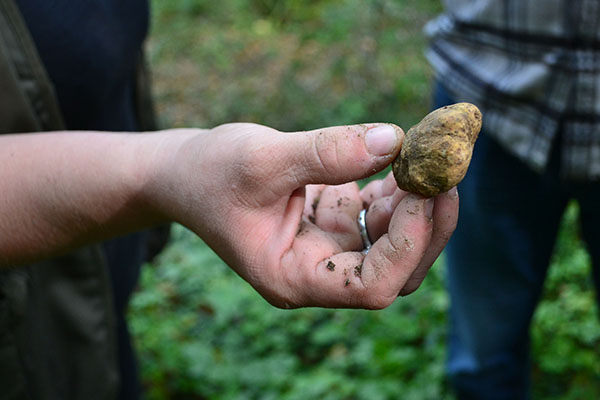+39 347.336.9382 [email protected]

So let's start with a nice roundup of scientific/ecological 'nerds' regarding our beloved truffle.
What is a truffle? The truffle is a mushroom; in particular, almost all edible species are mushrooms belonging to the genus Tuber.
Here is the first element to consider carefully: the genus name can easily mislead; the truffle is not a tuber (like potatoes, to be clear) but a real mushroom.
A characteristic of the mushroom truffle is its nature as an underground organism (it lives underground) and as a symbiont, i.e., it lives in association with the roots of higher plants; this symbiosis is called mutualistic as it provides obvious advantages to both organisms.
The body of this mushroom is made up of the mycelium, a set of filaments joined together called hyphae; the truffle, as we know it, which we eat, constitutes the fruiting body, the carpophore, of the mushroom.
Now that we understand what a truffle is, let's find out its connection with higher plants and why it is essential to know them when looking for truffles. As anticipated, the truffle is a symbiotic mushroom, but how does this symbiosis take place?
This union of mutual benefit in the truffle takes place through the Mycorrhizae, at the radical and microscopic level, a real association between the fungal hyphae and the radicle of the plant in question. These two elements are fused at the cellular level to allow for an exchange of nutrients from the fungus to the plant and from the plant to the fungus.
A truffle is an underground mushroom, not a tuber like the potato.
It belongs to the genus Tuber and is considered a delicacy in many cuisines.
We eat the fruiting body of the fungus, while the main body (called mycelium) lives underground.
Truffles grow symbiotically with the roots of certain trees, such as oaks, hazelnuts, and hornbeams.
Mycorrhiza is a partnership where the fungus and tree exchange nutrients, helping each other thrive.
Because they grow underground, truffles can’t be seen—they must be sniffed out.
Specially trained dogs (Lagotto Romagnolo) are used to find them by scent.
Truffles are primarily found in forests or truffle orchards in specific regions of Europe, especially Italy, France, and Spain.
They prefer calcareous (chalky) soils and specific climates, often near the roots of their host trees.